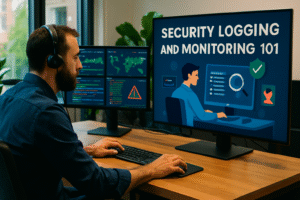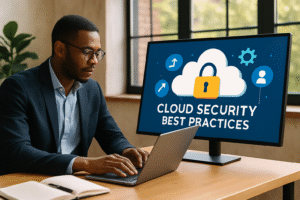
Password managers 101
In today’s digital landscape, our identities, finances, and even social lives are locked away behind passwords. The average person manages dozens—sometimes hundreds—of logins, each one a critical gateway to sensitive data or personal connection. Yet, as our reliance on digital services grows, so does the complexity of keeping these credentials safe. Enter the password manager: a tool designed not just for security, but for peace of mind and digital autonomy.
What is a Password Manager?
A password manager is a software application or service that stores, generates, and manages your online credentials in an encrypted database.
Rather than relying on memory, sticky notes, or insecure spreadsheets, a password manager acts as your digital vault. It remembers each unique, complex password for every account, leaving you with just one master password to access them all. This approach isn’t just about convenience—it’s a significant upgrade in security hygiene, especially in an era where password reuse and weak credentials remain the leading causes of data breaches.
“The best password is the one you don’t have to remember.”
How Do Password Managers Work?
At its core, a password manager creates a secure, encrypted container for all your passwords and sensitive notes. When you need to log in to a website or app, the manager can automatically fill in your credentials, often with a single click or tap. But how does this magic happen?
- Encryption: The database is typically protected by strong encryption algorithms, such as AES-256. Only your master password (which is never stored or transmitted) can unlock it.
- Password Generation: Most managers include a password generator. This tool creates long, random passwords that are virtually impossible to guess or brute force, eliminating the temptation to use “123456” or “Password!”
- Cross-Device Access: With cloud syncing, your credentials are available on your phone, tablet, and computer. Log in once, and your vault becomes accessible wherever you need it.
- Autofill and Auto-capture: Many managers detect when you enter new credentials and prompt you to save them. Later, they can automatically fill in login forms, saving time and reducing the risk of phishing.
This seamless integration is especially powerful for neurodivergent users, who may find traditional password management overwhelming or anxiety-inducing. The automation and simplification offered by password managers remove cognitive barriers, making technology more accessible and less stressful.
Why Password Managers Matter—Especially in Tech
Working in technology means dealing with a dizzying array of tools, platforms, and accounts. Developers, engineers, and IT professionals are often responsible not just for their own credentials, but for those of entire teams or organizations. Women in tech, who already face systemic challenges and biases, can find themselves at additional risk if password hygiene is neglected.
Password managers empower users by promoting best practices without sacrificing efficiency. They also enable secure sharing—a critical feature for collaborative environments. For instance, you can grant a colleague access to a shared account without ever disclosing the actual password. This fosters both security and trust in teams, an important step toward a more inclusive digital workspace.
“Security should be a facilitator, not a barrier, to innovation and collaboration.”
The Neurodivergent Perspective
For neurodivergent learners—those with ADHD, autism, dyslexia, and other differences—the traditional advice to “remember complex, unique passwords for every account” is not just impractical, it’s exclusionary. Password managers level the playing field, removing unnecessary obstacles and empowering all users to participate fully in the digital world.
Simple, predictable workflows reduce anxiety and cognitive load, freeing mental resources for creativity, problem-solving, and learning. Many modern managers also offer features like biometric login, customizable organization, and gentle reminders, further supporting diverse needs.
Security Features to Look For
Not all password managers are created equal. When choosing a solution, especially a free one, it’s important to evaluate features carefully. Here are some critical elements to consider:
1. End-to-End Encryption
Your data should be encrypted before it leaves your device, ensuring that even the password manager’s provider can’t access it. Look for managers that never store or transmit your master password.
2. Open Source Transparency
Open-source password managers allow anyone to audit their code for vulnerabilities or backdoors. This transparency builds trust and accelerates improvements.
3. Cross-Platform Support
You may need access on Windows, Mac, Linux, iOS, Android, and browser extensions. Seamless syncing and consistent interfaces make life easier, especially if you’re working or learning across multiple devices.
4. Secure Sharing
Collaboration is essential in tech. Look for managers that offer secure, controlled sharing of credentials without exposing underlying passwords.
5. Password Health Reports
These features analyze your vault for weak, reused, or compromised passwords and encourage better security habits over time.
6. Biometric and Two-Factor Authentication
Layered security is crucial. Options like fingerprint, Face ID, or TOTP (Time-based One-Time Passwords) add extra protection against unauthorized access.
The Best Free Password Managers in 2024
There is a thriving ecosystem of free password managers, many of which offer robust features suitable for both beginners and advanced users. Here’s a look at some top contenders, each with unique strengths:
Bitwarden
Bitwarden is a standout choice, combining open-source transparency with a generous free tier. It offers unlimited passwords, device syncing, and secure password sharing, all protected by end-to-end encryption. Bitwarden’s interface is clean and accessible, making it an excellent option for neurodivergent users and those new to password managers.
LastPass Free
Once the industry standard, LastPass Free still offers a solid set of features, including password storage and autofill. However, recent changes limit free users to one device type (either mobile or desktop), which may be restrictive for those needing cross-device access. Paid upgrades are available, but it’s still a strong choice for single-device users.
NordPass Free
NordPass—from the makers of NordVPN—brings a strong focus on security and design. The free version includes unlimited password storage and a sleek, user-friendly interface. While some advanced features are gated behind a subscription, the basics are robust and reliable.
KeePassXC
For those who value complete control and privacy, KeePassXC is an open-source, offline password manager. There’s no cloud syncing by default, which means your data never leaves your device unless you choose to set up your own sync solution (such as with a secure cloud service). KeePassXC is ideal for technical users comfortable with manual setup and customization.
Dashlane Free
Dashlane offers a polished experience and strong security, but the free plan is limited to 25 passwords on a single device. However, its intuitive interface and password health features make it a good introduction for users with modest needs.
How to Get Started: Step by Step
Transitioning to a password manager may feel daunting, but the process is straightforward—and the payoff is immense. Here’s a gentle roadmap for anyone starting this journey:
- Choose your manager. Evaluate your needs, devices, and comfort with technology. If in doubt, Bitwarden is a great all-around starting point.
- Create a strong master password. This is the only password you’ll need to remember. Make it long, unique, and memorable (a passphrase works well: “BlueSunsetGiraffe!2024”).
- Import or add your credentials. Many managers can import from browsers or other managers. Alternatively, add logins manually as you use them.
- Enable two-factor authentication. Protect your vault with an extra layer of security.
- Start using autofill and password generation. Let the manager create new, complex passwords as you sign up for services or update old accounts.
- Regularly review your password health. Periodically check for weak or reused passwords and update them as needed.
Educating the Next Generation
Teaching healthy password habits is a form of digital self-defense, and password managers are a cornerstone of that education. For schools, coding bootcamps, and tech communities—especially those serving women and neurodivergent learners—integrating these tools into curricula builds lifelong skills. Security isn’t just for specialists; it’s a universal literacy.
By normalizing the use of password managers, we foster independence and confidence. No one should be excluded from opportunity or innovation because of a forgotten password or a compromised account. Technology should be an equalizer, not a gatekeeper.
“Empowerment in technology begins with access—and access begins with trust.”
Password Managers and the Future of Identity
As we move toward passwordless authentication, biometric logins, and decentralized identity systems, the role of password managers will continue to evolve. For now, they remain an essential bridge—protecting us today, while preparing us for tomorrow’s innovations.
Adopting a password manager is more than a technical upgrade; it’s an act of self-care and digital respect. It’s a small but powerful step toward a safer, more inclusive, and more empowered digital world, for everyone.


